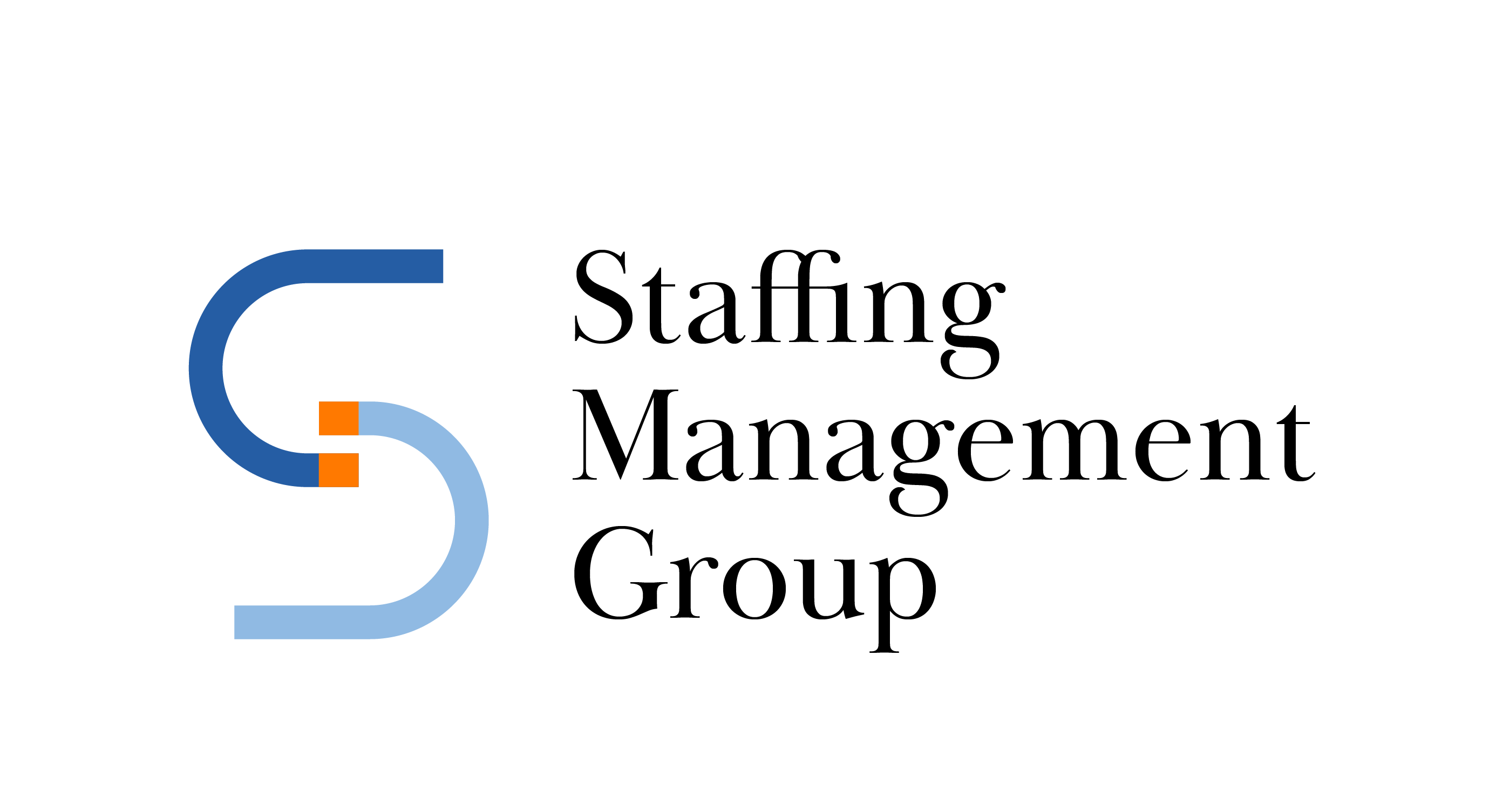Funding Growth: Alternative Financing Options for Staffing Firms in a Volatile Economy
Ever had a lender laugh at your staffing firm’s financing application? Yeah, we thought so. Traditional banks don’t get how staffing businesses operate – your most significant assets walk out the door every evening.
Let’s be real: securing capital for your staffing firm in today’s volatile economy feels like trying to hit a moving target while blindfolded. But here’s the thing – alternative financing options for staffing firms exist beyond the standard bank loan rejection cycle.
In this guide, we’re cutting through the financial jargon to show you exactly how to fund your growth without the traditional banking headaches. Whether you’re scaling operations or weathering seasonal cash flow gaps, these solutions work specifically for your staffing business model.
So what’s this magical financing option that values your invoices as assets rather than viewing them as risky paper? That’s where things get interesting…
Understanding Today’s Economic Challenges for Staffing Firms

How volatility impacts traditional financing channels
Running a staffing firm in today’s economy feels like trying to navigate a ship through a storm with outdated maps. Traditional banks have gotten skittish – they’re tightening lending criteria faster than you can say “economic uncertainty.”
What’s happening? Interest rates are bouncing around like a pinball, making long-term planning nearly impossible. Banks that used to fund staffing companies eagerly are now looking at the industry with side-eyes and crossed arms.
The ripple effects are brutal. Credit lines that staffing owners relied on for years are suddenly being reduced or, worse, not renewed at all. And when banks do offer financing, they’re slapping on restrictive covenants that practically handcuff your business decisions.
Key financial hurdles facing modern staffing businesses
The cash flow squeeze is real, folks. Staffing firms are getting hit from all sides:
- Unpredictable project timelines from clients who are themselves feeling economic pressure
- Rising costs for talent acquisition in competitive markets
- Increasing back-office expenses that eat into already thin margins
- Employee benefits and insurance costs that keep climbing
Then there’s the compliance mountain. Every state seems to be cooking up new employment regulations, each requiring more administrative bandwidth and financial resources to manage.
Why conventional bank loans may no longer be sufficient
Traditional bank loans have become like trying to fit a square peg in a round hole for staffing businesses. The fundamental mismatch is painful:
Banks want:
- Years of consistent profitability
- Hard assets for collateral
- Predictable cash flow patterns
- Low industry risk profiles
Staffing firms typically have:
- Project-based revenue streams
- Few tangible assets beyond receivables
- Seasonal or cyclical demand patterns
- Human capital is their primary asset
Most banks still operate with lending models designed for manufacturing businesses or retail operations, not service-based companies with rapid scaling needs.
The timing gap between paying staff and client payments
This right here is the killer problem for staffing firms. You’re fronting payroll every single week while waiting 30, 45, or even 60+ days for clients to pay invoices.
Do the math: A growing staffing firm placing 100 temporary workers at $20/hour needs approximately $80,000 in cash EVERY WEEK to cover payroll. That’s before taxes, insurance, and overhead.
Meanwhile, your corporate clients are stretching payment terms to improve their cash positions. The pandemic taught them they could get away with it.
This timing gap creates a financial treadmill that gets faster as you grow. Ironically, success can bankrupt you if you can’t bridge this widening cash flow canyon.
Invoice Factoring: Converting Receivables to Immediate Capital

How factoring works explicitly for staffing companies
Ever wonder why staffing firms struggle with cash flow? It’s simple: you pay your temps weekly, but your clients might take 30, 60, or even 90 days to pay you. That gap can kill your growth.
Here’s the process:
- You submit your timesheets and invoices to a factoring company
- They advance you 80-95% of the invoice value within 24-48 hours
- When your client pays (weeks later), you get the remaining balance minus the factor’s fee
Staffing factoring is uniquely tailored with higher advance rates because the invoices represent actual hours worked, which is less risky than product-based businesses.
Benefits of improved cash flow without increasing debt
The beauty of factoring? It’s not a loan. You’re selling an asset (your invoices), not creating new debt.
With immediate cash in hand, you can:
- Make payroll without stress
- Take on bigger clients with longer payment terms
- Say yes to sudden staffing requests
- Fund internal growth without giving up equity
Most staffing owners sleep better knowing Thursday’s payroll is covered regardless of which clients paid this week.
Comparing factoring costs vs the opportunity costs of delayed growth
| Factoring Costs | Opportunity Costs of Waiting |
|---|---|
| 1-3% fee per invoice | Lost contracts due to capacity limits |
| Administration fees | Inability to meet payroll for new placements |
| Potential minimum volume requirements | Competitors taking market share |
| Some client communication transparency | Limited ability to serve multiple large clients |
Do the math: If factoring costs 2% but lets you take on business that yields 15-20% margins, that’s a no-brainer growth lever.
Success stories: Staffing firms that scaled using factoring
TempForce Solutions was stuck at $2M annual revenue for years. After implementing factoring, they took on three major hospital systems that they had previously been unable to serve. Within 18 months, they hit $5.8M in revenue.
StaffQuick started with just two recruiters. Using factoring, they staffed a major manufacturing expansion project requiring over 200 temporary workers. That single contract doubled their business, and they maintained the client relationship after the project ended.
The pattern is clear: factoring creates breathing room that becomes growth fuel.
Potential drawbacks and how to mitigate them
Factoring isn’t perfect. Common issues include:
- Fees eat into margins (Solution: Negotiate volume discounts)
- Some clients dislike third-party payment processing (Solution: Use “confidential factoring” options)
- Long-term factoring dependence (Solution: Establish graduation criteria for traditional financing)
- Reduced profit visibility (Solution: Implement clear reporting systems)
Smart staffing owners use factoring strategically – sometimes for specific clients or projects rather than their entire AR portfolio. You can also negotiate better terms as your volume increases.
The key is viewing factoring as a growth tool, not just a cash flow band-aid.
Revenue-Based Financing for Stable Staffing Operations

How do repayments scale with your monthly revenue?
Revenue-based financing (RBF) is a game-changer for staffing firms navigating economic uncertainty. Unlike traditional loans with rigid monthly payments, RBF ties your repayments directly to your actual performance.
Here’s the beauty of it: when your staffing placements surge and revenue jumps, you pay more. During slower months? Your payments automatically decrease. This creates a natural breathing rhythm for your cash flow.
Most RBF providers take between 3-8% of your monthly revenue until you’ve repaid the agreed-upon amount (typically 1.3x to 2x the original funding). This percentage stays fixed, but the dollar amount flexes with your business cycles.
For staffing firms dealing with seasonal hiring patterns or contract-based work, this scaling mechanism is pure gold—no more panic when a major client temporarily reduces their staffing needs.
Qualification criteria for staffing-specific RBF
Getting approved for RBF as a staffing firm isn’t like jumping through traditional bank hoops. Providers look at different metrics:
- Revenue history: Most require $10K-$50Kin monthly revenue with 6-12 months of operating history
- Growth trajectory: Evidence of steady or increasing placements
- Client diversification: Less reliance on a single major client (reduces risk)
- Recurring revenue: Ongoing contracts score major points
Staffing-specific RBF providers understand your industry’s unique cash flow challenges. They know you often pay workers weekly while waiting 30-60 days for client payments. This industry knowledge translates to more favorable terms than generic financing options.
Benefits of avoiding equity dilution while accessing growth capital
Growing your staffing firm shouldn’t mean surrendering ownership. RBF delivers substantial growth capital without the equity dilution that comes with venture capital or private equity deals.
The math is simple: keep 100% control of your staffing agency while still accessing the funds needed to:
- Open new markets or specialties
- Upgrade your ATS or recruitment technology
- Fund payroll during rapid expansion phases
- Launch marketing campaigns to attract new clients
Traditional equity investors might push for unrealistic growth timelines or exit strategies that don’t align with your vision. RBF removes these pressures, allowing you to grow at a pace that makes sense for your specific market conditions.
Plus, the application and funding process typically takes days, not months—critical when staffing opportunities emerge suddenly in this volatile economy.
Private Equity and Strategic Partnerships

When to Consider Selling Equity Stakes
Got cash flow problems that won’t quit? When traditional loans start looking like dead ends, equity financing might be your ticket forward. Staffing firms typically consider selling equity stakes when:
- You need substantial capital for rapid expansion
- Your growth outpaces what debt financing can support
- You’re eyeing acquisitions that require deep pockets
- Market volatility makes loan terms unreasonably restrictive
The timing matters tremendously. The sweet spot? When your firm has established reliable revenue but needs a significant boost to reach the next level. Don’t wait until you’re desperate—investors can smell desperation a mile away.
How to Attract the Right Investment Partners for Staffing Firms
Finding investors isn’t the hard part—finding the right ones is. The best PE partners bring more than just money to the table.
Look for investors who:
- Have experience specifically in the staffing sector
- Understand your niche market (IT staffing operates differently than healthcare staffing)
- Bring complementary business connections
- Share your vision for the growth pace and direction
Your pitch needs to highlight what makes your staffing firm unique. Is it your proprietary recruiting tech? Your specialized candidate pool? Your retention rates? Whatever it is, quantify it.
Structuring Deals That Preserve Operational Control
Nobody wants to build a business only to become an employee in their own company. Smart deal structuring keeps you in the driver’s seat.
Consider these protection mechanisms:
- Minority equity stakes (30-49%) that limit investor voting rights
- Clearly defined roles and decision authorities in operating agreements
- Staged investments tied to performance milestones
- Board representation caps
- Exit strategy alignment from day one
Remember—control often matters more than valuation. A slightly lower valuation with more substantial operational autonomy typically works out better long-term.
Case Studies: PE-Backed Staffing Firm Expansion Strategies
Insight Global’s Strategic Partnership
When Insight Global partnered with Harvest Partners, they maintained management control while securing capital that fueled their expansion from 16 to 43 offices nationwide. Their approach? Geographic expansion while doubling down on their core IT staffing competencies.
The Atlas Staffing Turnaround
Atlas Staffing brought in Westbridge Capital as a minority investor but leveraged its industry contacts to transform its business model. Within 18 months, they:
- Developed two new specialty divisions
- Implemented enterprise-grade recruiting software
- Increased EBITDA by 67%
- Expanded into three new states
The key to both examples? Clear boundaries and expectations are established upfront. Neither firm lost its identity or became purely numbers-driven operations.
Digital Lending Platforms and Fintech Solutions

A. New technology-based lending options designed for service businesses
Gone are the days when staffing firms had to beg traditional banks for funding. Digital lending platforms have changed the game completely.
These new tech-powered options understand the unique cash flow challenges staffing companies face. They don’t just look at your credit score—they analyze your client contracts, payment histories, and business performance metrics.
The best part? Most fintech lenders specifically design their products for service-based businesses like staffing firms. They get that you need capital to make payroll before your clients pay you.
Some standout options include:
- Platform lenders that offer revolving credit lines based on your accounts receivable
- Supply chain financing that pays your contractors immediately while extending client payment terms
- Embedded financing is built directly into your staffing software or payment platforms
B. AI-powered approval processes for faster capital access
Time is money in the staffing world. When you need funds to onboard new talent for a big client project, waiting weeks for loan approval isn’t an option.
That’s where AI comes in clutch. Today’s digital lenders use machine learning algorithms to:
- Review your application in minutes instead of days
- Analyze thousands of data points beyond traditional credit metrics
- Predict your repayment ability based on industry patterns
- Reduce human bias in lending decisions
One staffing firm owner told me they secured $250,000 in working capital in under 48 hours—something unheard of with conventional banks.
C. How integrated payment platforms can improve financing terms
Innovative staffing firms are connecting their entire financial ecosystem. When your invoicing, payroll, and banking systems talk to each other, lenders can see your complete financial picture.
These integrated platforms give lenders real-time visibility into:
- Your cash conversion cycle
- Client payment reliability
- Contractor satisfaction metrics
- Profit margins by project
This transparency typically translates to better rates and terms. Think about it—when lenders can see exactly how money flows through your business, they can customize financing that aligns with your revenue patterns.
D. Comparing rates and terms across digital lending marketplaces
With so many digital lending options, comparison shopping is critical. Different platforms offer wildly different terms depending on your business profile.
| Lending Type | Typical Rates | Funding Speed | Best For |
|---|---|---|---|
| Invoice Financing | 1-3% per month | 24-48 hours | Immediate cash flow needs |
| Revenue-Based | 6-12% + fee | 3-7 days | Growth capital |
| Term Loans | 8-30% APR | 1-2 weeks | Equipment/expansion |
| Credit Lines | 10-25% APR | Instantly once approved | Ongoing working capital |
Don’t just look at the interest rate. Pay attention to origination fees, prepayment penalties, and personal guarantee requirements.
The digital lending landscape changes constantly. What was the best deal six months ago might not be today. Set a calendar reminder to reassess your financing options quarterly.
Strategic Use of Business Credit Cards and Lines of Credit

Leveraging introductory rates and rewards programs
Business credit cards aren’t just plastic in your wallet—they’re strategic tools that can supercharge your staffing firm’s cash flow. Many cards offer 0% APR introductory periods ranging from 12 to 18 months. That’s essentially an interest-free loan during your crucial growth phases.
The real magic happens when you pair these intro rates with the right rewards programs. Cards like Chase Ink Business Preferred or American Express Business Gold can deliver 3-5% back on staffing-related expenses. Think about it—if you’re spending $20,000 monthly on operations, that’s up to $12,000 in annual rewards you’re leaving on the table without the right card.
Pick cards that match your spending patterns:
- Travel-heavy firms: prioritize airline/hotel points
- Office/equipment buyers: look for office supply bonuses
- High-volume spenders: cash-back percentage trumps point systems
Using credit cards to manage short-term placement costs
When a major client needs 15 temps by Monday but won’t pay for 45 days, credit cards bridge that gap. They cover immediate costs like background checks, onboarding expenses, and even first-week payroll advances.
The trick is timing your billing cycles. Make large purchases right after your statement closes to maximize float time—sometimes extending your interest-free period to nearly 60 days.
Smart staffing owners create a rotation system:
- Pay immediate expenses with Card A
- Transfer balances strategically to Card B with the remaining intro period
- Pay off with client payments before interest kicks in
Building business credit scores for better future financing options
Your business credit score isn’t just a number—it’s future leverage. Starting with entry-level cards and consistently paying on time builds the credit profile that unlocks premium financing later.
The three-step credit ladder works like this:
- Start with secured business cards if necessary
- Graduate to cards requiring personal guarantees
- Qualify for high-limit corporate cards without personal liability
Report all positive payment history to business credit bureaus. Many vendors don’t automatically report—you’re missing free credit-building opportunities. Set up auto-payments for minimum amounts to prevent accidental dings to your score.
Remember that utilization matters. Keep balances below 30% of available credit, even if you could technically spend more. This signals to lenders you’re not credit-dependent and improves your score dramatically.
Creating a Diversified Funding Strategy

A. Matching financing options to specific growth initiatives. Innovative staffing firms don’t just grab any available money—they pair specific funding types with their growth goals. Think about it: why use long-term debt for a short-term project?
For market expansion, consider equity partnerships that bring both capital and strategic connections. Need to hire internal talent? A line of credit offers the flexibility to scale your team without overcommitting.
Equipment or tech upgrades are often more effective with equipment financing or leasing arrangements. When you’re eyeing acquisition opportunities, mezzanine financing or SBA loans provide the substantial capital needed without surrendering control.
The key is alignment. Match your funding’s timeline, cost, and control implications with your objectives.
B. Combining multiple funding sources for optimal flexibility
The most resilient staffing firms use a funding cocktail rather than a single source. This isn’t just diversification—it’s strategic layering.
You might use factoring for day-to-day operations, keeping cash flowing while your line of credit remains available for unexpected opportunities. Maybe you’ll add revenue-based financing for your marketing push while preserving traditional bank relationships for larger initiatives.
This approach gives you breathing room. When one source tightens (as banks often do during economic downturns), your alternatives keep you moving forward while competitors hit pause.
C. Developing relationships with multiple financial partners
Building solid relationships with various financial partners before you need them is like having insurance—except it pays off.
Start by connecting with:
- Traditional banks
- Alternative lenders
- Industry-specific financing companies
- Angel investors or family offices
- Community development financial institutions
Don’t wait until you’re desperate. Financial partners want to see how you operate in good times before backing you in challenging ones. Invite them to understand your business model, your industry cycles, and your management approach.
The staffing industry has unique cash flow patterns that not all financiers understand. Finding partners who get your business is worth gold during volatile times.
D. Building financial resilience through diversification
Financial resilience isn’t just about having multiple funding sources—it’s about structuring them to withstand different market pressures.
Some smart approaches:
- Maintain both fixed and variable rate financing
- Balance short-term and long-term obligations
- Include both asset-based and cash flow-based options
- Mix secured and unsecured funding when possible
- Consider both domestic and international sources if you operate globally
This diversification means economic shifts impact only portions of your financial structure rather than toppling your entire framework. When interest rates jump, your fixed-rate components provide stability. When collateral values fluctuate, your cash flow-based financing remains steady.
E. Creating a funding escalation ladder for different business stages
Think of funding like a ladder you climb as your staffing firm grows. Each rung represents financing that matches your current size and the following goals.
Early-stage firms might start with:
- Personal savings
- Friends and family investments
- Factoring arrangements
- Small business credit cards
Mid-size operations can climb to:
- Bank lines of credit
- SBA loans
- Revenue-based financing
- Selective equity partnerships
Established firms reach for:
- Institutional financing
- Private equity
- Mezzanine debt
- Specialized acquisition financing
The beauty of this ladder approach? You’re constantly preparing for the next rung while maximizing your current position. Each financing success builds credibility for the next level, creating momentum that fuels sustainable growth even when the economy gets shaky.

Navigating economic volatility requires staffing firms to look beyond traditional bank loans to fuel their growth. Invoice factoring offers immediate working capital by converting outstanding receivables into cash flow, while revenue-based financing provides flexible repayment structures based on monthly revenue. For firms seeking larger investments, private equity partnerships can deliver substantial capital infusions alongside valuable industry expertise. Meanwhile, digital lending platforms offer streamlined application processes with faster approvals than conventional banks.
Innovative financial leaders in the staffing industry recognize that combining multiple funding sources—such as pairing credit lines for day-to-day expenses with factoring for working capital needs—creates resilience against market fluctuations. By developing a diversified funding approach tailored to your specific business model and growth objectives, your staffing firm can maintain operational stability while capitalizing on expansion opportunities, regardless of broader economic conditions.
We appreciate you taking the time to explore SMG’s insights. If you’re aiming to optimize operations and reduce overhead, check out our Workforce Solutions for streamlined EOR support and compliance handling. Need reliable cash flow? Our Payroll Funding services provide flexible financing tailored for staffing agencies interested in scaling your agency with trusted allies. Learn more through our Partners Program. For a deeper look at how we’re helping agencies nationwide in Funding Growth, head to our home page.
